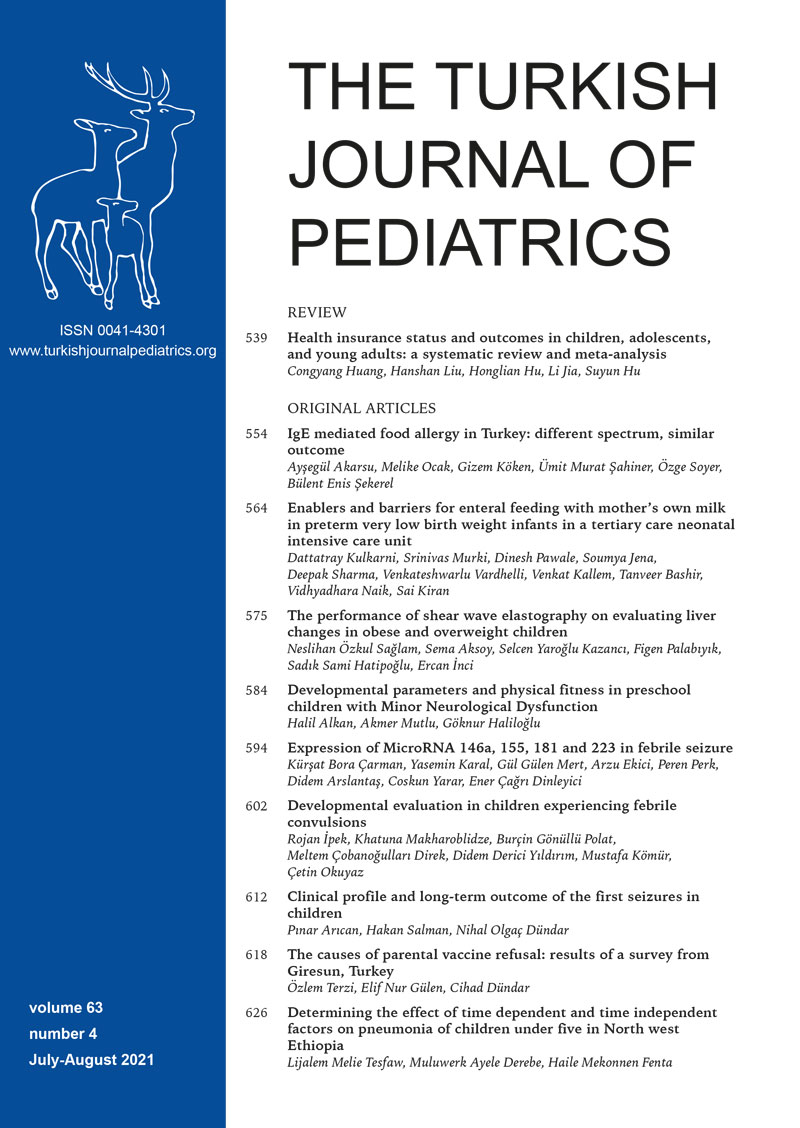Abstract
Background. Seizures are one of the most common causes of pediatric admissions to hospitals in children. This study aims to identify the clinical profile and outcome of first seizures in children.
Methods. Children who presented to the pediatric neurology outpatient clinic and pediatric emergency service with a first-time seizure and aged one month through 18 years old were enrolled to the study. At the time of the study, enrolled children were categorized into three study groups according to seizure characteristics: febrile seizure, nonfebrile-provoked seizure and, unprovoked seizure.
Results. The study group consisted of 138 children. Of the 138 patients, 60 (43%) had febrile first seizures, 23 (17%) had nonfebrile-provoked first seizures, and 55 (40%) had unprovoked first seizures. The patients did not experience the recurrence of a seizure by the treatment of underlying cause at the eighteenth month and the eighth year follow-up in the nonfebrile-provoked seizure group. Among the children admitted for unprovoked first seizures, 33 (60%) patients had seizure recurrence during 18 month follow-up and 36 (82%) patients had seizure recurrence during eight year follow-up. Seizure recurrence rate was statistically higher in patients with abnormal EEG and cranial MRI findings in the unprovoked seizure group (p < .05).
Conclusions. The patients with provoked first seizure did not develop epilepsy during eight year follow-up. However, 36 patients with unprovoked seizures were diagnosed with epilepsy during eight year follow-up. It is essential to determine the causes of the seizures and treat the condition.
Keywords: children, epilepsy, outcome, risk factors, seizures
Copyright and license
Copyright © 2021 The Author(s). This is an open access article distributed under the Creative Commons Attribution License (CC BY), which permits unrestricted use, distribution, and reproduction in any medium or format, provided the original work is properly cited.














